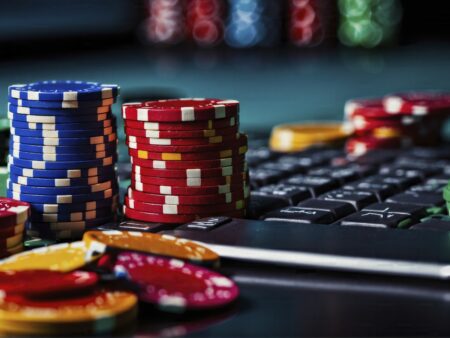Wielding the ancient art of deception to master the poker table requires more than chance and brawn, it demands finesse, psychological shrewdness and timely execution. Learn how to use this potent strategy to tip the odds in your favor.
Poker Faces: How to Master the Art of Bluffing
You’re at the poker table, the stakes are high, and you’ve got a hand that doesn’t exactly inspire confidence. Do you fold, or do you press on, relying on the power of a well-placed bluff to win the day? Poker, unlike some other casino games, isn’t just about the luck of the draw. It taps into skill, strategy, and psychology, offering a perfect platform for players to outwit their opponents. And nothing epitomizes this more than the art of bluffing.
Understanding Bluffing
Bluffing is a key element of any successful poker strategy. It involves representing a stronger hand than you actually have, in a bid to mislead your opponents into thinking you’re in a better position than you really are. To put it simply, a successful bluff can turn a weak hand into a winning one.
The Psychology of Bluffing
The most effective bluffs are those which convince your opponents to fold, relinquishing the pot to you. This requires a keen understanding of the psychology of gambling and poker. When you bluff, you are playing on your opponent’s fears and doubts. You’re prompting them to question their own hand and strategy, possibly leading them to make a decision that favors you.
Timing is Everything
The first step to mastering the art of bluffing is understanding when to do it. Contrary to what some may think, bluffing isn’t something to be utilized in every game or every hand. In fact, over-bluffing can quickly lead your opponents to catch on to your tactics, reducing the effectiveness of your bluffs. The best bluffs are timely, calculated risks – such as when you sense hesitation or doubt in your opponent, or when you have a strong read on their hand.
Crucial Techniques to Bluff Much Better
Successful bluffing is not merely about misleading your opponents; it’s about doing so convincingly. This involves controlling your physical tells, manipulating your betting patterns, and learning how to read and react to your opponents’ behavior. It’s equally important to pay close attention to the number of players in a hand, the game’s overall style, and your perceived image at the table.
Ensure your bluffs are believable. If you wager high on weak hands but have consistently played safe, your abrupt change of pattern will unnerve your opponents. On the other hand, if you are known as the brave gambler, your bluff might not raise eyebrows. Hence, create an image and use that to your advantage.
Learn from the Best: Lessons from Seasoned Players
Studying professional poker games can offer invaluable insights and examples of effective bluffing. Legendary figures like Phil Ivey and Daniel Negreanu have mastered the technique with finesse. Watching their game play, noticing how they bluff, can augment tremendously your poker skills. It’s how top-level chess players learn: they analyze grandmasters’ games.
Master Other Game Strategies
While bluffing can be an effective strategy, it’s not the only one available to specialty poker players. Understanding and mastering the basics of poker strategy, is crucial. For example, knowing good starting hands, understanding positioning, and the importance of aggression can significantly improve your game. Likewise, being familiar with blackjack strategies can assist in understanding betting strategies in more depth.
The Power of a Good Bluff
Bluffing can turn the tide in your favor. It can spin even a weak hand into an opportunity. So, knowing when and how to bluff is a crucial component of a comprehensive poker strategy. Don’t forget – bluffing is as much about reading your opponents as it is about misdirecting them. So, keep your eyes on them, as much as on your cards.
Wrap Up
Mastering the art of bluffing is no small feat. It takes practice, patience, and a deep understanding of the psychology of gambling. But when done effectively, bluffing can take your poker game from average to extraordinary. Remember, the art of bluffing is just as important, if not more so, than the cards you’re dealt. So pull up a chair, get your poker face ready, and prepare to bluff your way to victory at your next poker game.
Now that you know how to elevate your poker game through the art of bluffing, are you ready to give it a try? Do you have other effective poker strategies to share? We’d love to hear from you in the comments below.










